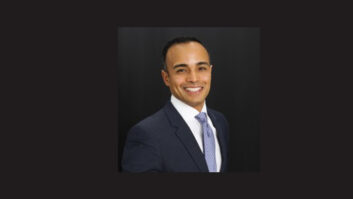KWVA(FM) broadcasts from the University of Oregon campus in Eugene, Ore. A wholly student-operated college radio station owned by the university, KWVA plays a mix of music, talk shows and live college sports broadcasts on 88.1.

Originating in the 1950s as KWAX, it served as an academic laboratory providing daily services for the campus and community. Becoming an NPR affiliate in the 1970s, the station and the university ended up cutting ties and in the early 1980s, KWAX moved off campus.
It was nearly ten years before a student body petition and ensuing university approval provided a whopping $25,861 to cover the costs for construction of the new station and its first year of operation. However, due to an FCC objection to the proposed antenna positioning, it was more than three years before the amended application, antenna installation and newly renamed station was complete.
The premiere KWVA broadcast took place in May 1993, with 500 W and the mission to provide a forum for cultural and educational exchange for the University of Oregon students. In 2008, KWVA relocated its transmitter, upped the signal strength to 1 kW and upgraded the facilities, which vastly increased its listenership to all of Eugene/Springfield and the surrounding areas.
Fast forward to 2016 — and now working with part of a $95 million budget — KWVA is firmly reimagined as a state-of-the-art broadcast facility located in the newly reconstructed student union. There is a large open performance space outside the studios wired for broadcasting live shows, two dedicated on-air studios and two production rooms, which are also broadcast-capable.
PREREQUISITES TO CONSTRUCTION

The station was designed by General Manager Charlotte Nisser and Chief Engineer Ali Abdul-Sate. They collaborated on the layout, studio configuration, equipment and cable paths. Equipment selection generated a spate of budget issues, including the need to go through the university and state processes for major purchases.
They kept the facility fabrication close to home by utilizing nearby Portland, Ore., specialists: SERA Architects handled the room construction; Lease Crutcher Lewis served as the general contractor and for construction management; Glumac was the MEP, in charge of the mechanical and electrical engineering responsibilities; and Listen Acoustics handled audio control and isolation.
Two buildings underwent transformation: the original KWAX building was remodeled, and the Student Union was demolished to make way for new construction. The university threw a farewell party dubbed “Demolition Sayonara,” inviting students to bid graffiti farewells with cans of spray-paint and slingshot-launched balloons filled with paint — and then provided them implements of destruction, handing out sledge hammers and pickaxes to turn the decorated hulk to rubble.
During construction, some old gear got pulled out of storage, including cart machines and carts that KWVA first used to broadcast in 1993.
“We intend to put these on display for incoming tours and volunteers to see some historic audio/broadcast gear. We’re finding having these on display is more and more important as current college students don’t know what a cart is!” Nisser said.
LET’S GO INSIDE

Club-sandwiched between a pizza parlor, student lounges, business offices, study spaces and a high traffic corridor, Nisser and Abdul-Sate predicted noise issues. They attenuated the racket by adding acoustic rated glass to the hallway sides of the live on-air studios.
“This decision afforded a two-fold value, allowing the talent to not feel like they were in a cave and to let passersby see the activities in the studio — from solo DJs to live interviews with bands,” said Nisser. “We spent a great deal of time working through and balancing the acoustic needs of the radio station and the acoustic impacts of the student union programs around the station.”
As an educational environment, the university provides a variety of formats for the students producing content. The on-air studios (approximately 14 ft. 5 in. x 15 ft. 7 in.) provide seating for five around EV microphones, with room for an additional four chairs and gallery seating for three along the wall.
Lawo crystal consoles were designated for all facilities; in the on-air studios Abdul-Sate put 16-channel boards, while both production studios were equipped with eight-channel versions. Powered by Lawo Compact Engines, remoted to the rack room and each occupying only one RU, they incorporate a redundant power supply and optimized expansion slots for additional I/O cards. Audio signal processing is selectable at 44 k / 48 k, and each channel presents three fully parametric EQs, gating, compression, expansion, limiting, de-essing and up to 320 ms delay. AutoMix and AutoGain controls provide further ease-of-use.

Lawo customized KWVA’s console GUIs using its VisTool screen-building software. Potential objects for the GUI include buttons, meters, text displays, faders and rotary controls. Windowed or full screen video images can be displayed. Web objects can also be placed on the screen for display and interaction. A Boolean logic engine creates conditionally-aware functions.
With the ability to offer different operators either a fully accessible console or a restricted interface defined by user rights management, Abdul-Sate said, “The Lawo crystal system fit the KWVA workflow because they can be customized to do anything. In a facility staffed by over 150 volunteers, with a mix of sports, news and music programming, we really needed that ability.”
Nisser reflected, “Just power and network cables. Such a change from our old set-up!”
Each control room is outfitted with Denon DN-C635 CD players, the Technics SL-1200MK2 turntables and Pioneer DJ CD “controllers” with a Denon mixer. Yamaha and Fostex speakers and ART headphone amps providing air, cue and talkback monitoring.
The production rooms have seating for four around two Shure SM7B microphones, Tascam CD-RW901SL CD players and National Broadcast System’s Natural Music software.
Every Sunday, the students broadcast a two-hour “Live Session” from the open, multi-purpose lounge located in the Student Union right outside KWVA. Eight mic patch points routed to a Mackie 1642VLZ4 (16 channel) located in production room one allow the mix to be directed to either of the on-air studios for live broadcast or recording. For post-production, Audacity and Adobe Audition are used to edit stereo files, along with the increasingly popular Cockos’ “Reaper” DAW for multi-track recording and mixing.
INTO THE ENGINE ROOM

In this three-rack room, we find shore power, electrical breakers for the entire facility and power distribution connected to the 2000-watt APC UPS. Network and telephone jack patch panels, audio I/O and CAT-6 ties, RF distribution, a Lorex DVR for facility-wide security video recording and ceiling speaker amplifiers flesh out another rack.
You’ll also find the main and backup network-attached storage drives, the 24/7 on-air archiver, an audio switcher for the air chain (which switches individual studio program, automation, emergency CD and future backup automation), a 25-Seven systems Program Delay Manager, and a silence sensor.
The central router is a Lawo Nova 17, a 512×512 with 16 (opto-coupler, relay and VCA) GPIOs, 16 Analog IOs, eight digital AES/EBU IOs and an internal 288 IO matrix. Used for control, sharing of sources, monitoring, backup feed and central recording, Abdul-Sate noted that it is not in air chain. Connections to the studios are via multi-mode 62.5-micron fiber.

Two Telos ProStreams with 24-bit A/D converters and the choice of MP3 or AAC-LC, He-AAC, HE-AAC v2 coding and output bit rates between 16 and 320 kbps maintain the two streams’ online presence. Integral to the Prostream is Omnia processing, adding wideband AGC, three-band compressor/limiter, EQ, low-pass filter and a look-ahead final limiter. A Shoutcast server running on a PC using Linux is also employed.
A Sage Endec and Crown receiver supports the EAS system, and FM confidence receivers are also stationed here.
Comrex Access IP codec permits live audio from the field (no more ISDN drops required) and a Comrex Matrix provides wideband, broadcast quality audio over POTS lines.
A Broadcast Tools air chain switcher is used to switch studios and streams via a virtual interface for the sports department.
Wide Orbit automation running on Dell PCs is available in the all studios and production rooms. Racked speakers and audio meters round out monitoring from the rack room.
TRANSMISSION
The studio-to-transmitter link is a Harris Intraplex T1 system combining bi-directional transport of program audio with a wide variety of other traffic including LAN/WAN data, telephone, intercom, fax, and remote control data. It is backed up by an equalized, direct line (sources are switchable). Orban makes the FM processor (located at the transmitter). The station is planning to add a backup transmission site in the future.












